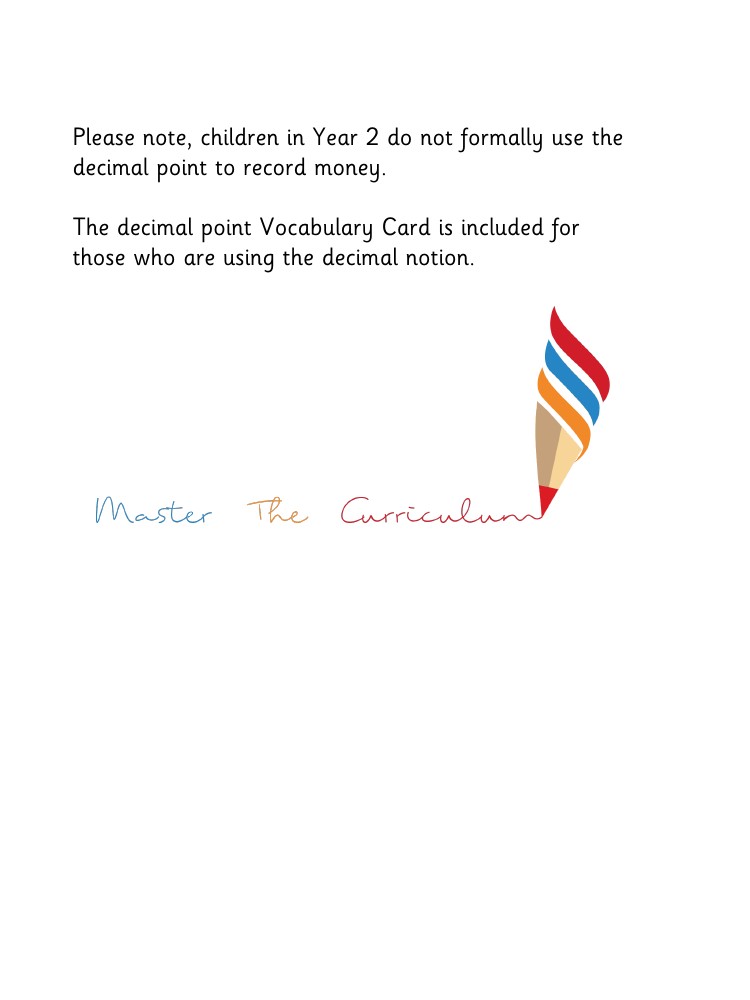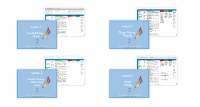Money - Vocabulary

Maths Resource Description
In Year 2, children are introduced to the concept of money, which includes understanding different coins and notes used to purchase items. They learn about 'currency', the system of money specific to a country, such as the United Kingdom's pounds and pence, or the United States' dollars and cents. In the UK, 'pence' is the term used for the coins, with 100 pence equating to one pound, and the symbol 'p' representing pence. The denominations of coins in pence include 1p, 2p, 5p, 10p, 20p, and 50p.
The unit of currency larger than pence is 'pounds', symbolised by the £ sign. While Year 2 students do not formally use the decimal point in recording money, the concept is introduced for those who are ready. A decimal point is a dot used to separate the whole number from the fractional part in a number. 'Partitioned' refers to the method of splitting up, particularly separating pounds from pence when dealing with money. The lesson also covers the process of 'converting' between pence and pounds. Additionally, children learn about 'silver coins' (5p, 10p, 20p, 50p) and 'copper coins' (1p, 2p), as well as the concept of 'change', which is the money returned when more is given than the cost of an item. They explore the 'value' of different coins and notes, the 'difference' between amounts, and how to 'compare' values to determine which is more or less. Lastly, 'equivalent' means having the same value, such as how 100 pence is equivalent to one pound or two 50p coins are equivalent to £1.

